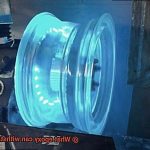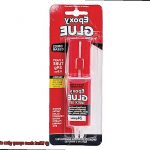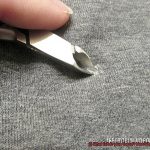Sick of glue disasters that make you want to pull your hair out? Yeah, we’ve all been there, my friend. But don’t sweat it because I’ve got some news that’ll make your day – Gorilla Glue is here to save the day. This stuff is like the superhero of adhesives, sticking things together like nobody’s business. But even superheroes have their weaknesses, and Gorilla Glue is no exception.
In this blog post, we’re diving deep into the secret world of what Gorilla Glue can’t stick to. So buckle up, folks, because we’re about to uncover the surprising foes that challenge this mighty adhesive.
What is Gorilla Glue?
Contents
- 1 What is Gorilla Glue?
- 2 Why Does Gorilla Glue Not Stick to Certain Materials?
- 3 What Are Some Common Surfaces and Materials that Gorilla Glue Does Not Adhere to?
- 4 How Can You Tell if a Surface Is Not Compatible with Gorilla Glue?
- 5 What Other Considerations Should Be Made When Using Gorilla Glue?
- 6 Tips for Maximizing the Bonding Strength of Gorilla Glue
- 7 Alternatives to Using Gorilla Glue on Non-Compatible Surfaces
- 8 Conclusion
Renowned for its unparalleled strength and versatility, this remarkable glue is a game-changer for any project. However, even the mightiest adhesive has its boundaries. In this comprehensive guide, we will explore the diverse surfaces and materials that Gorilla Glue may not adhere to, empowering you to make informed decisions and achieve flawless results in your endeavors.
Polyethylene and Polypropylene Plastics:
When faced with the challenge of bonding polyethylene or polypropylene plastics, Gorilla Glue finds itself outmatched due to their low surface energy. These plastics are commonly found in water bottles, food containers, and certain household items, making it imperative to seek alternative solutions for such materials.
Teflon:
Dreaming of resurrecting your non-stick cookware with Gorilla Glue? Think again. Teflon’s smooth surface and resistance to adhesives create an unyielding barrier that makes it arduous for the glue to establish a robust bond. Look for specialized solutions tailored for Teflon repairs.
Silicone:
Silicone, a go-to sealant in many applications, poses a formidable challenge for Gorilla Glue due to its slick surface. While silicone-based adhesives designed specifically for bonding silicone surfaces can come to the rescue, using Gorilla Glue on silicone may yield disappointing results.
Oily or Greasy Surfaces:
The presence of oils or grease erects an impenetrable wall between Gorilla Glue and the material yearning to be bonded. Ensure that surfaces are meticulously cleaned and purged of any oils or grease before applying the glue to ensure optimal adhesion.
Underwater Surfaces:
Gorilla Glue, undoubtedly waterproof once cured, is not the go-to adhesive for underwater surfaces or applications consistently exposed to water. Over time, water can gradually undermine the bond, prompting the need for specialized adhesives designed to withstand such conditions.
Extreme Heat:
Alas, Gorilla Glue must bow before the scorching heat of extreme temperatures. Surfaces subjected to intense heat, such as hot pans or stovetops, spell doom for this adhesive powerhouse. To avoid disappointment, seek alternative bonding solutions for high-temperature environments.
Certain Fabrics:
While Gorilla Glue can work wonders in fabric repairs, it might struggle with fabrics boasting a low thread count or loose weave. The texture of such materials may impede the bond or allow the glue to seep through, necessitating alternative approaches for a successful union.
Why Does Gorilla Glue Not Stick to Certain Materials?
Gorilla Glue is renowned for its strong bonding properties, but have you ever wondered why it sometimes fails to adhere to certain materials? In this captivating exploration, we delve into the science behind Gorilla Glue’s limitations and uncover the factors that influence its bonding ability.
The Non-Porous Predicament:
One of the main reasons Gorilla Glue struggles with certain materials is their non-porous nature. Surfaces like plastic, glass, or metal resist absorbing moisture – a crucial element for Gorilla Glue’s curing process. To conquer this challenge, roughening the surface or creating microscopic grooves can increase its surface area, providing more opportunities for adhesion.
The Enemy Within: Oils and Contaminants:
Oils, greases, dirt, or certain coatings act as formidable barriers between Gorilla Glue and its intended bonding surface. Thoroughly cleaning and degreasing surfaces before applying the glue is essential to ensure optimal adhesion. Remember, a clean surface is a sticky surface.
Plastics Pose a Challenge:
Polyethylene (PE) and polypropylene (PP) plastics present a formidable foe due to their low surface energy. These materials make it difficult for adhesives like Gorilla Glue to form strong bonds. Overcoming this challenge often requires specialized adhesives or proper surface preparation techniques to enhance adhesion with these slick surfaces.
Temperature Troubles:
Extreme temperatures can also impact Gorilla Glue’s performance. Excessive heat may cause the glue to become runny or lose its strength, while extreme cold can significantly slow down the curing process. Following the manufacturer’s recommended temperature guidelines is crucial for achieving optimal bonding results.
Inherent Resistance:
Some materials possess inherent properties that make them resistant to adhesion. Teflon, famous for its non-stick properties in cookware, serves as a prime example. Gorilla Glue, like most adhesives, struggles to bond with Teflon and other materials with similar characteristics. In such cases, exploring alternative adhesive options is a recommended course of action.
Gorilla Glue’s ability to bond effectively is influenced by several factors, including the porous nature of the material, the presence of oils or contaminants, the surface energy of plastics, temperature conditions, and inherent material properties.
By understanding these factors and taking appropriate steps to prepare surfaces and select suitable adhesives, you can achieve optimal bonding results.
What Are Some Common Surfaces and Materials that Gorilla Glue Does Not Adhere to?
Join us on an intriguing journey as we uncover the hidden science behind Gorilla Glue’s limitations and explore the factors that hinder its bonding capabilities. Let’s unravel the secrets of why Gorilla Glue may struggle to adhere effectively.
Non-Porous Surfaces:
Glass, metal, and plastic are examples of non-porous surfaces that can challenge Gorilla Glue’s bonding ability. Their impenetrable nature prevents the glue from seeping in and creating a strong bond.
Coated or Finished Surfaces:
Varnished, lacquered, or painted materials pose a hurdle for Gorilla Glue. The smoothness of these finishes lacks the necessary roughness or porosity for the glue to adhere effectively.
Silicone:
Gorilla Glue meets its match when it encounters silicone, a synthetic rubber-like material celebrated for its non-stick properties. The repellent nature of silicone makes it difficult for the glue to form a strong bond.
Moisture or Water Exposure:
Constant moisture or water exposure can impede Gorilla Glue’s curing process, inhibiting it from fully bonding materials. It is crucial to ensure surfaces are clean and dry before applying the glue.
Challenging Plastics:
Polyethylene (PE) and polypropylene (PP) are stubborn plastics with low surface energy and chemical resistance, posing a challenge for Gorilla Glue. Specialized glues or surface treatments may be necessary for these materials.
Delicate Fabrics:
Silk, chiffon, and other delicate fabrics are not compatible with Gorilla Glue’s strong adhesive properties. The glue can create stiffness or discoloration on these materials. Opt for fabric-specific adhesives for these applications.
High-Temperature Applications:
Gorilla Glue is not designed for high-temperature projects. Extreme heat can cause the glue to soften or lose its adhesive properties. For such applications, specialized adhesives formulated for high temperatures are recommended.
How Can You Tell if a Surface Is Not Compatible with Gorilla Glue?
Before you dive in headfirst, it’s important to determine if your surface is compatible with this powerful adhesive. Gorilla Glue is a force to be reckoned with, but it needs the right materials to unleash its full potential. So, how can you tell if a surface is not compatible with Gorilla Glue? Let’s dive into the key factors that you need to consider.
First and foremost, let’s talk about porosity. Gorilla Glue loves porous materials that can absorb moisture. This activation and curing process is what makes the adhesive so strong. Non-porous surfaces like glass or metal might not provide enough moisture for Gorilla Glue to work its magic. So, if your surface doesn’t have any nooks and crannies for the glue to seep into, it might not be compatible.
Cleanliness plays a crucial role as well. Gorilla Glue demands a clean and dry surface for optimal adhesion. If your surface is oily or has any residue, it’s like trying to stick a post-it note onto a greasy window. The glue won’t be able to hold on tight. So, roll up your sleeves and give that surface a thorough cleaning before applying Gorilla Glue.
Certain plastics can also pose a challenge for Gorilla Glue. Plastics with low surface energy, like polypropylene and polyethylene, are like smooth talkers that won’t let the glue adhere well. It’s like trying to make friends with someone who just won’t open up. Gorilla Glue may struggle to bond effectively with these types of plastics, resulting in weak or unreliable bonds.
Temperature resistance is another factor that can make or break the compatibility between your surface and Gorilla Glue. The adhesive performs best within a specific temperature range, typically between 50°F and 90°F (10°C and 32°C). Extreme temperatures can throw a wrench into the curing process and compromise the strength of the bond. So, if your surface will be exposed to scorching heat or bone-chilling cold, it might not be the best match for Gorilla Glue.
Last but not least, keep an eye out for any coatings or treatments on the surface. Some paints or varnishes contain additives that create a slick or non-stick surface. It’s like trying to glue a slip-n-slide together – it just won’t stick. These coatings can interfere with the bonding process and prevent Gorilla Glue from doing its job effectively. It’s always a good idea to test a small, inconspicuous area before committing to a full application.
What Other Considerations Should Be Made When Using Gorilla Glue?
However, achieving a strong and reliable bond requires careful consideration of several factors. In this blog post, we will explore important considerations to keep in mind when using Gorilla Glue. So, let’s dive into the world of Gorilla Glue and ensure successful bonding in your next project.
Material Matters:
Consider the surface or material you are working with. Gorilla Glue is ideal for porous materials like wood, fabric, and paper. These surfaces allow the glue to seep into their pores, creating a sturdy bond. Non-porous materials such as metal, glass, or plastic may require additional measures to achieve a secure bond.
Cleanliness is Key:
Ensure that the surface is thoroughly clean before applying Gorilla Glue. Any dirt, dust, or oil can hinder the adhesive properties and prevent proper bonding. Use a mild detergent or rubbing alcohol to clean and dry the area, providing optimal adhesion.
Temperature and Humidity:
Gorilla Glue performs best at room temperature (around 70°F or 21°C) and moderate humidity conditions. Extreme temperatures can affect the curing process and weaken the bond. Therefore, store and use Gorilla Glue in a controlled environment for optimal results.
Proper Application Technique:
Applying Gorilla Glue correctly is crucial for a strong bond. Start by applying a thin layer of glue to one surface and firmly press the two surfaces together. Avoid using too much glue as excess adhesive can create messiness or interfere with bonding. Following the manufacturer’s instructions ensures durable bonds.
Expansion and Compatibility:
Remember that Gorilla Glue expands as it cures. This expansion is beneficial for filling gaps or uneven surfaces but may pose challenges in tight spaces or with delicate materials. Test the glue on a small, inconspicuous area before applying it to the entire surface to ensure compatibility and avoid surprises.

Water Resistance:
While Gorilla Glue is water-resistant once fully cured, prolonged exposure or constant immersion in water may weaken the bond over time. For projects involving frequent water exposure, choose a specific Gorilla Glue variant designed for waterproof applications to ensure long-lasting results.
Tips for Maximizing the Bonding Strength of Gorilla Glue
Gorilla Glue is known for its exceptional bonding strength, but there are certain steps you can take to maximize its effectiveness. By following these tips, you can ensure a strong and durable bond that will withstand the test of time.
Prepare the surfaces
Before applying Gorilla Glue, it is crucial to clean and prepare the surfaces you want to bond. Any dirt, dust, or grease on the surfaces can hinder the bonding process. Use a mild detergent or rubbing alcohol to thoroughly clean the surfaces and ensure they are free from contaminants. Additionally, consider roughening the surfaces with sandpaper or a file to create a slightly rough texture. This provides more surface area for the glue to adhere to, resulting in a stronger bond.
Apply the glue sparingly
While it may be tempting to apply a generous amount of glue, it is actually more effective to use it sparingly. Gorilla Glue expands as it cures, so applying too much glue can lead to excess foaming and overflow. Instead, apply a thin layer of glue using a brush or spreader, ensuring even distribution over the surface.
Use clamping or weight
To maintain a secure bond during the curing process, it is recommended to use clamps or weights. This helps apply even pressure on the bond and prevents any movement or separation. Follow the instructions on the Gorilla Glue packaging for recommended clamping times and pressures.
Allow sufficient curing time
Gorilla Glue requires moisture to activate and cure properly. It is essential to allow sufficient time for the glue to cure and reach its maximum bonding strength. The curing time can vary depending on factors such as temperature and humidity, so refer to the instructions provided by Gorilla Glue for specific guidelines.
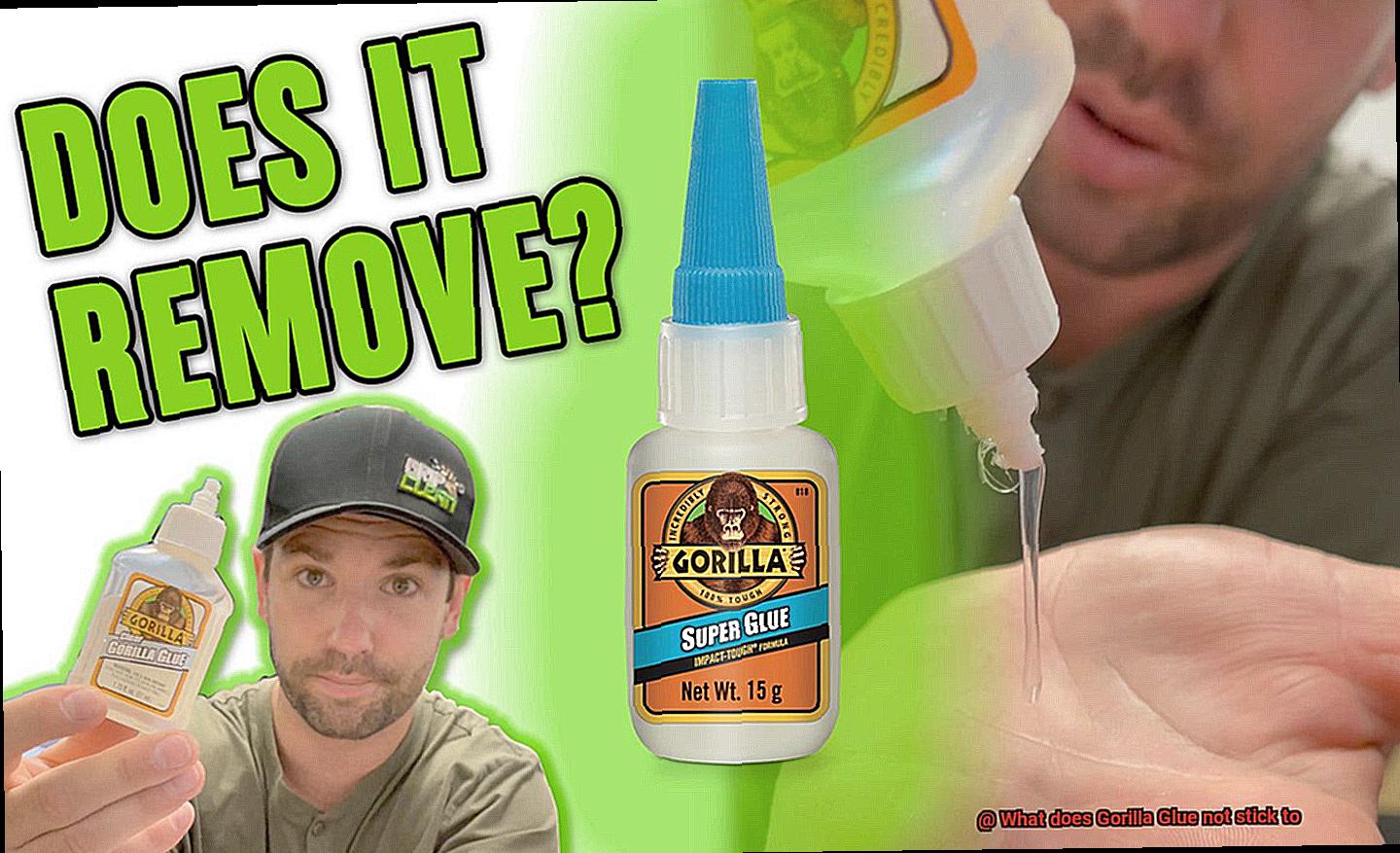
Avoid water exposure during curing
While moisture is necessary for the curing process, it is important to avoid direct water exposure during the initial stages of curing. Excessive water can weaken the bond and affect the overall strength. Keep the glued surfaces dry until the glue has fully cured.
Alternatives to Using Gorilla Glue on Non-Compatible Surfaces
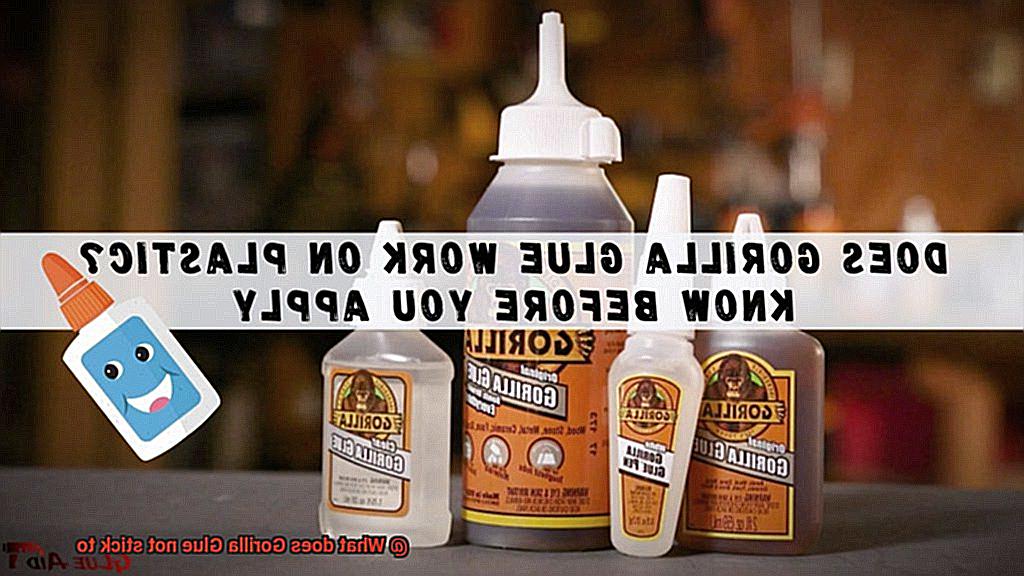
Gorilla Glue is undoubtedly a powerful adhesive, but even the mightiest have their limitations. When faced with non-compatible surfaces, it’s time to explore alternative options that can effortlessly bond materials together. In this comprehensive guide, we will delve into a range of alternatives that will help you tackle any bonding challenge like a seasoned professional.
Epoxy Adhesive:
When Gorilla Glue falls short, epoxy adhesive steps up to the plate. This versatile adhesive forms an ultra-strong bond between various materials, including those that pose a challenge for Gorilla Glue. From metal and glass to plastic surfaces, epoxy’s superior bonding capabilities make it the go-to choice for difficult-to-bond materials.
Super Glue (Cyanoacrylate):
Need a fast-drying adhesive that works wonders on non-porous surfaces like metal, glass, or ceramics? Look no further than super glue. Its rapid adhesion and incredible strength make it an ideal choice for quick fixes and smaller projects where time is of the essence.
Carpenter’s Glue/Wood Glue:
For woodworking enthusiasts and porous surface aficionados, carpenter’s glue or wood glue is your secret weapon. These specialized adhesives are tailor-made for woodworking projects, delivering a strong bond that withstands the test of time.
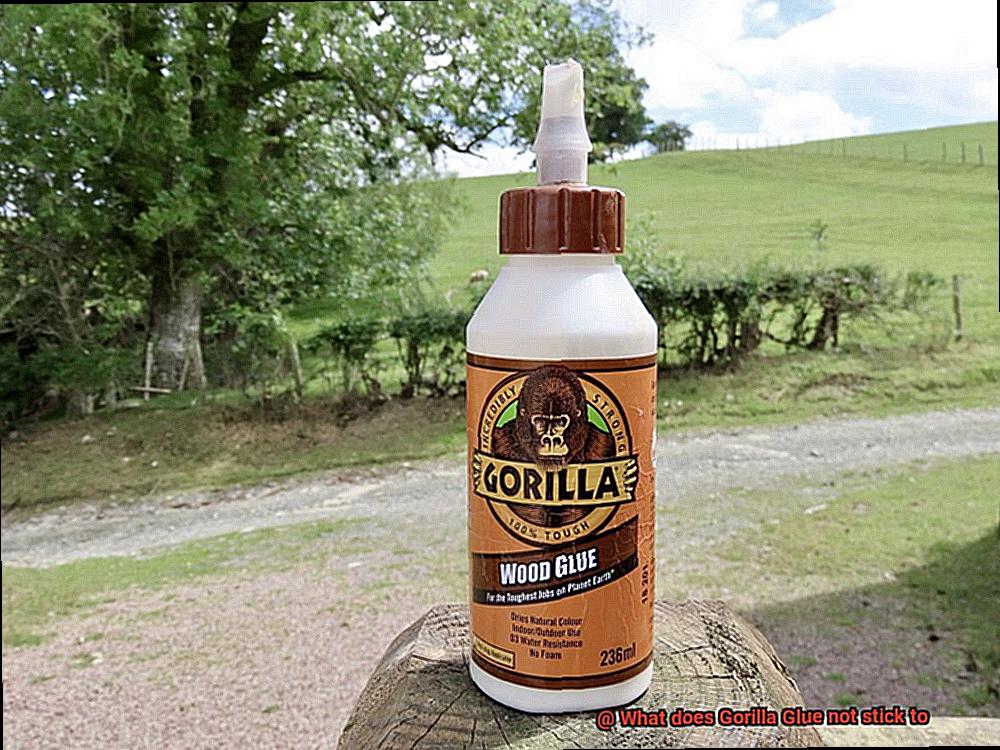
Double-Sided Tape:
When flexibility or temporary bonding is the need of the hour, double-sided tape becomes your trusty companion. Its simplicity in application and removal makes it perfect for non-permanent bonding requirements.
Silicone Adhesive:
In need of an adhesive that can handle high temperatures or wet environments? Look no further than silicone adhesive. Its waterproof and heat-resistant properties make it perfect for bonding materials in demanding conditions.
Fabric Glue:
For fabric and textile projects, fabric glue takes center stage. Specifically designed to bond fabrics together, it can withstand washing and dry cleaning, ensuring your creations remain intact.
Mechanical Fasteners:
Sometimes, nothing beats the reliability of mechanical fasteners like screws, nails, or bolts. These tried-and-true methods provide a secure bond and offer the flexibility of easy removal or adjustment when needed.
ycLnwJ2Tfec” >
Conclusion
Gorilla Glue, renowned for its incredible adhesive properties, has the power to bond with almost any material. However, there are a few exceptions that can resist its mighty grip. So, what does Gorilla Glue not stick to? Let’s explore the fascinating world of materials that remain impervious to this formidable adhesive.
First and foremost, Gorilla Glue struggles to adhere to surfaces coated with oil or grease. The slick nature of these substances creates a barrier that prevents the glue from establishing a strong bond. So, if you’re working with greasy machinery parts or oily surfaces, it’s best to clean them thoroughly before attempting any gluing endeavors.
Next on our list are plastics such as polyethylene and polypropylene. These types of plastic have low surface energy, making it challenging for Gorilla Glue to form a lasting bond. If you find yourself needing to glue items made from these materials, consider using adhesives specifically designed for bonding plastics.
Furthermore, Gorilla Glue may not be the ideal choice for bonding certain types of rubber. Rubber surfaces that contain high levels of silicone can repel the glue’s adhesive properties. Additionally, rubber materials with extreme flexibility or elasticity might not provide enough surface area for the glue to adhere effectively.
Another surprising material that resists Gorilla Glue is Teflon (polytetrafluoroethylene). Teflon possesses exceptional non-stick properties which make it highly resistant to adhesion. So if you’re hoping to glue something onto your trusty Teflon-coated frying pan, think again.
Lastly, Gorilla Glue may struggle when confronted with dusty or dirty surfaces. The presence of particles and debris can hinder proper adhesion and compromise the strength of the bond. It is crucial to ensure that surfaces are clean and free from any contaminants before applying Gorilla Glue.
In conclusion, while Gorilla Glue is an incredibly powerful adhesive, it does have its limitations. It may struggle to bond with surfaces coated in oil or grease, certain types of plastics, silicone-rich rubber, Teflon, and dirty surfaces.


